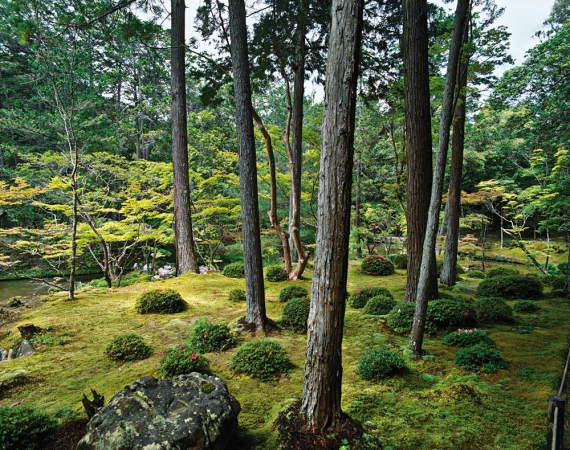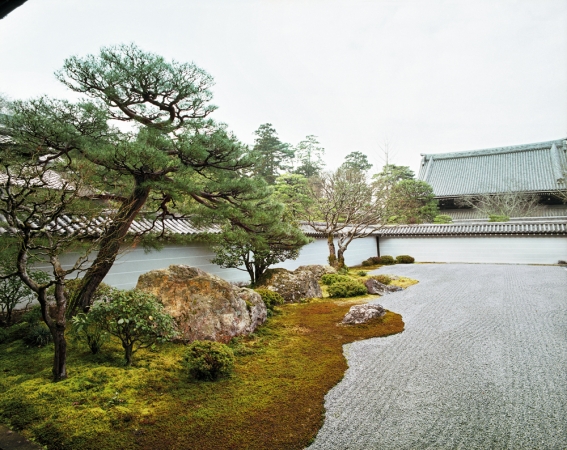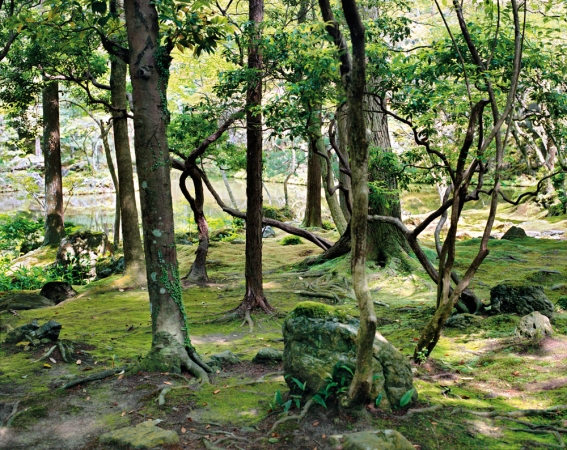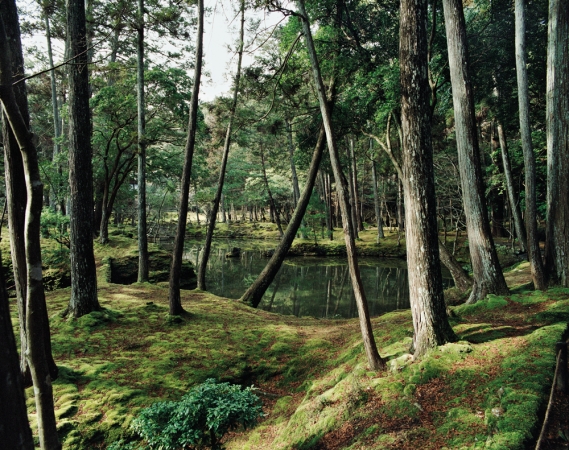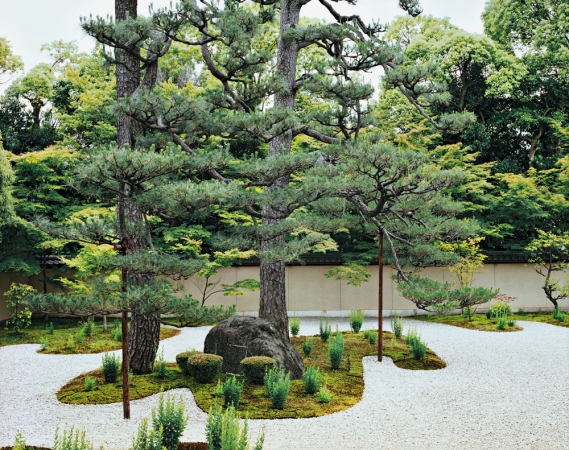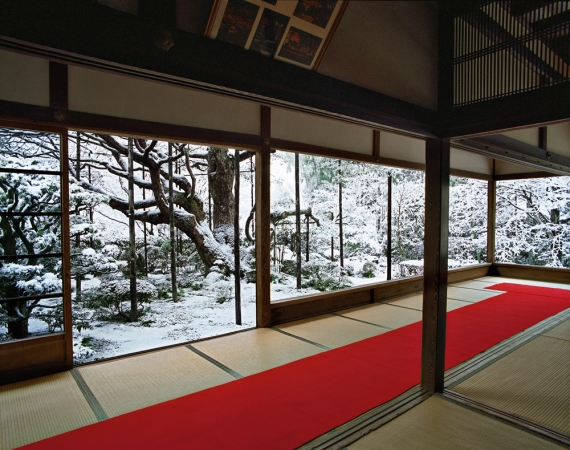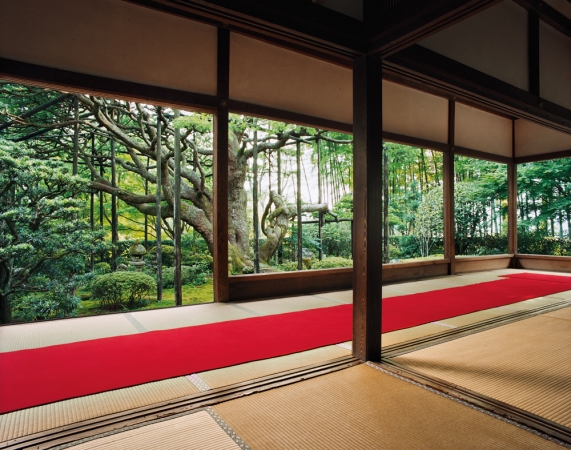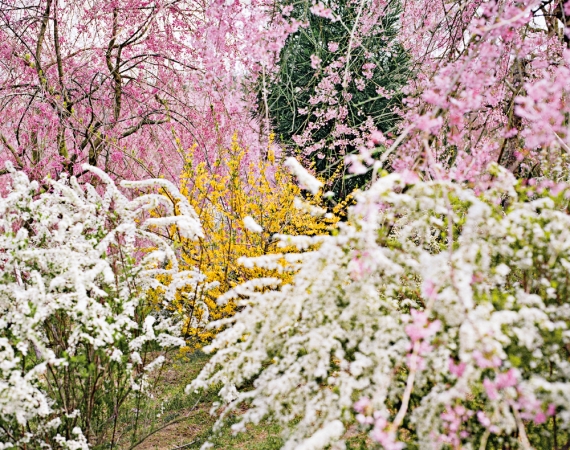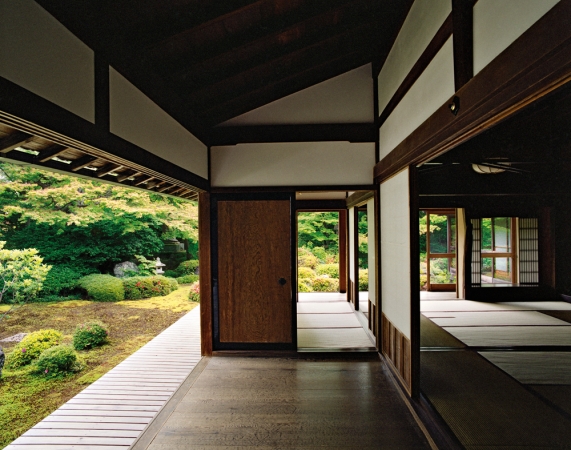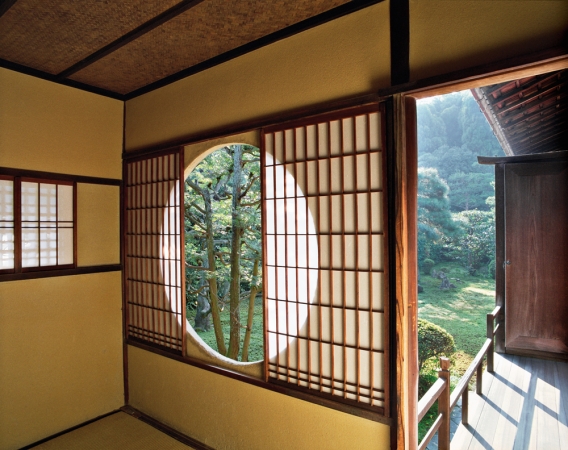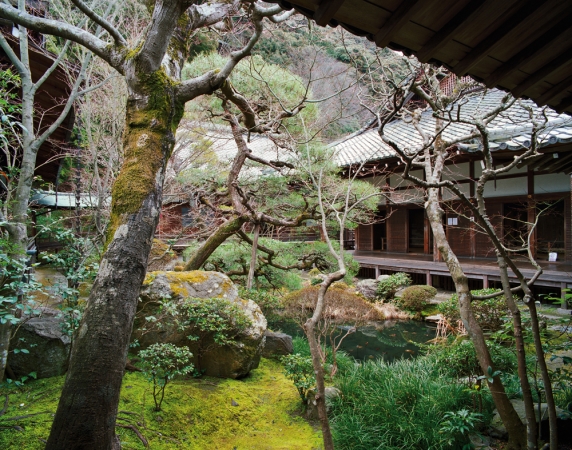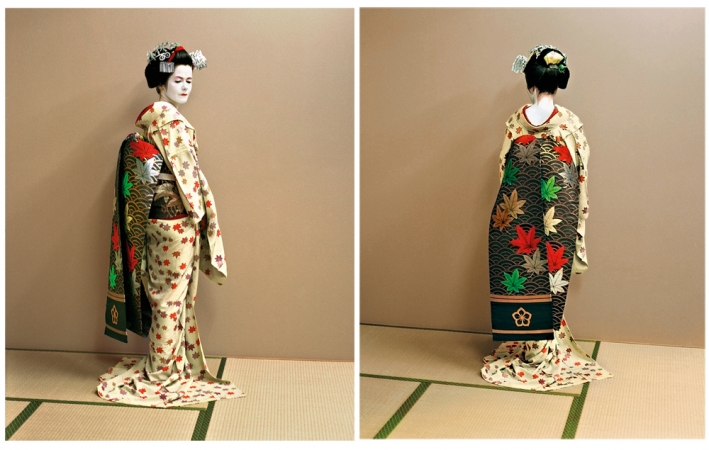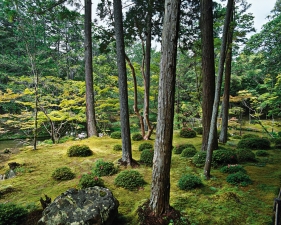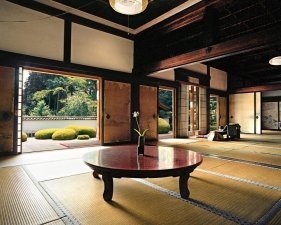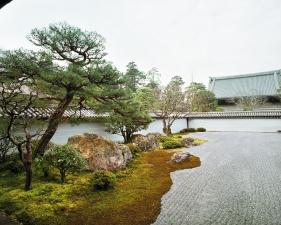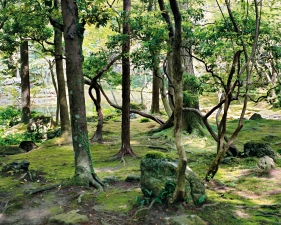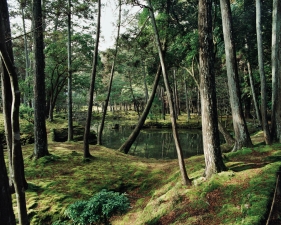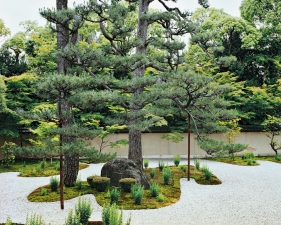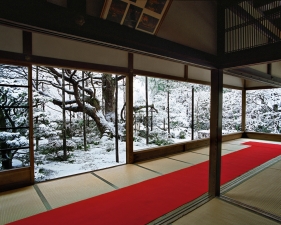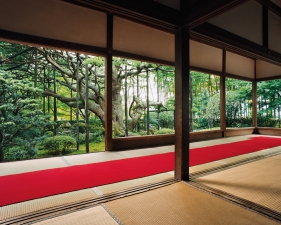VIEW, KYOTO
Benrubi Gallery is proud to present Jacqueline Hassink’s View, Kyoto, a remarkable
series of photographs of Kyoto’s Zen Buddhist temples and gardens. Japan’s capital from
794 to 1868, Kyoto is home to some 1,600 temples, each with its own garden. Over the
course of a decade (2004 – 2014) Hassink photographed 34 locations throughout the
seasons. This is Hassink’s first solo exhibition with Benrubi and is supported as a part of the
Dutch Culture USA program by the Consulate General of the Netherlands in New York. Her
ninth monograph, View, Kyoto, published by Hatje Cantz, comes out March 24, 2015.
Hassink’s images are suffused with the unique appeal of Japanese architecture and
landscape even as they create their own aesthetics. Temple design is scaled to the 1:2 ratio
of the tatami, itself ordered to the size of a human body. Hassink’s lens brings out this
human point of view, her camera positioned as if the viewer were now standing, now seated
on a mat; poised at a threshold or located on the veranda between temple and garden. The
composition of the photographs is as carefully considered as the sacred spaces they reveal,
highlighting the balanced yet never static interplay between interior and exterior spaces in
temple design. The rigidity of the temple’s lines and angles is played off against the softer
garden forms seen through open doors or unglazed window. The browns and golds and
whites of the interiors, with here and there a spot or stripe of bold red, collage with the
brown, grays, and greens of the gardens to create a single meshed field. If, initially, the
perception is one of division between human and nature or terrestrial and divine, it soon
becomes one of continuity between two realms. Neither is wholly constructed or found;
neither could exist without the other.
On view in the project space is a film diptych in which interviews with the head monks of four
sects are paired with a journey through the temples themselves. The film gives voice to the
men responsible for these remarkable spaces while simultaneously capturing the
experience of transitioning between public and private, secular and sacred.
Hassink’s work has been widely collected and exhibited, including shows at Huis Marseille in
Amsterdam; Fotomuseum Winterthur, Winterthur; Amador Gallery and ICP in New York;
Tokyo Metropolitan Museum for Photography, Tokyo; The Photographers’ Gallery and the
Victoria and Albert Museum in London and the Guangzhou Museum of Modern Art,
Guangzhou. It has also appeared in such publications as The Financial Times, Le Monde,The
New York Times, El Pais, Frankfurter Allgemeine, Süddeutsche Zeitung, Reuters, De
Standaard, NZZ,Newsweek, Fortune, and Wired.
Jacqueline Hassink was born in July 1966 in the Netherlands, and currently lives in New York City. Hassink is well known for her global art projects that deal with the world of economic power. Her work represents visual, graphic, and sociological maps of the axes of global economic structures. Her first art project, The Table of Power (1993–95), was followed by projects such as: Car Girls (2002–08), Haute Couture Fitting Rooms, Paris (2003–12), and The Table of Power 2 (2009-11), which was nominated for the 2012 Paris Photo/Aperture Book Award as one the ten best photo books of the year. The Table of Power 2 was also the runner up for the PhotoEspaña Best Photography Book of the Year Award.
Her most recent work, View, Kyoto, was photographed from 2004 to 2014. Hassink has spent 18 months in the city over a period of ten years, creating a series of photographs that explores the undefined border between private and public space in thirty-four of the city’s 1,600 Buddhist temples, in which interior spaces and gardens are carefully arranged so that someone seated in a temple’s meditation space or on a veranda will be presented with a specifically crafted view of nature. “The absence of windows leads the visitor to perceive space in a new way,” the artist has said, “with no border between the private and public realm.”
Hassink’s work has been widely collected and exhibited, including shows at Huis Marseille in Amsterdam; Fotomuseum Winterthur, Winterthur; ICP in New York and the Museum of Photographic Arts in San Diego; Tokyo Metropolitan Museum for Photography, Tokyo; The Photographers’ Gallery and the Victoria and Albert Museum in London and the Guangzhou Museum of Modern Art, Guangzhou. It has also appeared in such publications as The Financial Times, Le Monde, The New York Times, El Pais, Frankfurter Allgemeine, Süddeutsche Zeitung, Reuters, De Standaard, NZZ, Newsweek, Fortune, and Wired. She is the winner of the Rencontres d'Arles 2002 Unlimited Award and the Dutch Doc Award 2013. She was shortlisted for Prix Pictet 2012, one of the most prestigious photography prizes in the world. It is the first prize dedicated to photography and sustainability. In 2013 she was shortlisted for the Henri Cartier Bresson Award and in 2014 she was longlisted for the Deutsche Börse Photography Prize.




